The .223 Remington has been a great companion of hunters, target shooters, and home defenders for decades. The easy availability, versatility, and less recoil with great precision make it a much-preferred cartridge in the US.
If you are looking for the best scope for 223 rifles, you might be overwhelmed by the number of options available on the market. There are many factors to consider when choosing a scope for your 223 rifle, such as magnification range, reticle type, durability, clarity, and price.
To help you narrow down your choices, The RangerExpert team compiled a list of 10 of the best scopes for 223 rifles that we think offer great value and performance.
If you want to find your perfect scope regardless of your experience or skill level, follow along as we explore some of the best Scopes for 223 rifles and what to expect when you do decide to get on for yourself. Let’s jump right into it!
Our Reviewed Best Scope for 223 Rifle
1 Vortex Optics Crossfire II 1-inch Tube Riflescopes (Editor’s Choice)
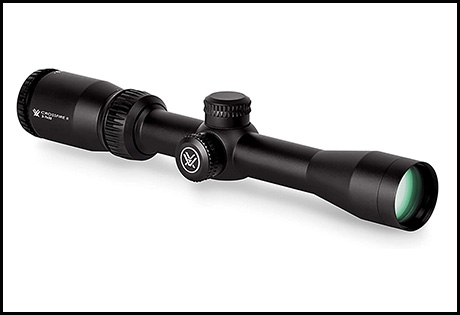
Vortex is the magic wand of scopes. They have been on the scene long enough to know the features that are essential for a good scope. The Crossfire II is the perfect example of simple functionality without the fancy bells and whistles and most importantly, it does best what it’s meant to do; to give you superior sporting quality.
The lens has several sheets of anti-reflective coatings that keep glare at bay and harvest light transmission effectively. The solid chassis is a single tubing body that confers high scope integrity so you can easily make precise adjustments.
A zero-reset turret is part of the works and is fully capped for protection. It is impervious to inclement weather conditions and is shock resistant as well.
Eye relief is exceptionally forgiving and the quick-focus eyepiece is a splendor. It allows swift, uncompromised, clear, and bright pictures. An unconditional VIP lifetime warranty is thrown in as well if the longevity of the product concerns you.
The image quality at 9x magnification takes a beating. If you want to use this scope on a scout-type rifle, choose the model carefully.
Sadly, it does miss out on lucrative features like reticle illumination. We were curious if it would hold zero following the heavy recoil of a Remington but the result wasn’t up to par.
We would like to put in a word for Vortex’s customer support, which doesn’t come any better. Overall, the build quality, and the sharpness of the image still outweigh the flaws in the product.
Specifications
- Magnification: 4-12x
- Objective Lens: 44 mm
- Length: 13.1 inch
- Weight: 17.2 oz.
- Eye Relief: 3.9 inch
- Adjustment: ¼ MOA
- Parallax: 100 yards Factory set
Pros
- Affordably priced
- Crispy images
- Fast-focus eyepiece
- Zero-reset turret
- Ample eye relief
- Excellent for shooting at wider ranges
Cons
- Complex adjustments
Our Verdict
This riflescope holds great promise for hunting. You don’t have to break the bank for some sophisticated features that don’t make much of a difference in the shooting.
The Vortex Crossfire II keeps things simple and is no pea shooter. If you’re on the search for the best 223 scope for hunting or target shooting, you can pick this amazing rifle scope any day of the week.
2 Primary Arms Classic Series 4-16x44mm SFP Rifle Scope (Long Range Shooting)
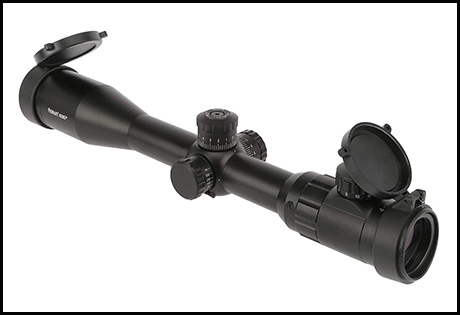
This second focal field plane riflescope is an absolute champ in both short and long-range shooting. The scope features a mil-dot reticle that can be illuminated in 12 different settings depending on the light conditions.
The view is crystal clear, all thanks to the fabulous lens. The quick switching mode is more of a bonus considering the price it comes at.
Being a second focal plane scope, the Mil-dot reticle can magnify targets up to 16 times the actual size. The zero is resettable and the turrets have a locking function. The ¼ MOA clicks are loud enough to be heard in the Suez.
The parallax adjustment is through a sidewise knob that banishes parallax as well as extending a sharp image even at extended ranges.
The scope itself is of incredible strength. It has been engineered to withstand high stresses and shocks. The durability is awesome irrespective of external factors such as weather.
In the box, you get a bunch of additional tools and components that will come in handy for you. These tools include a heavy-duty mounting bracket, some screws, an instruction manual, align key, lens covers, cleaning cloths, and so on.
Image clarity is exceptional in all the magnification levels. Performance in low-light situations is praiseworthy. Though the mil-dots can be a wee bit tiny to locate, it’s not a deal-breaker by any means.
Turrets are easy to relocate without the use of any tools. Overall, we doubt you’ll find a better alternative that matches the price and the magnification power at the same time.
Specifications
- Magnification: 4-16x
- Objective : 44 mm
- Length: 14.75 inches
- Weight: 23.5 oz
- Eye relief: 4 inches
- Adjustment Click Value: ¼ MOA
- Field of view at 100 yards: 3.5 inch-26.19 feet
- Reticle: Illuminated Mil-dot
Pros
- Excellent build quality
- High magnification
- Illuminated Mil-dot reticle
- Easily adjustable elevation and windage turrets
- Crispy and clear glass
- Up to 12 reticle adjustments
Cons
- Insufficient eye relief
Our Verdict
Primary Arms have come up with a large number of rifle scopes that have given the competition a run for the money in the recent past. Reviewing this product, we have to say that they’ve still got it.
For a little over 150 dollars, they are offering this compact model with a multitude of features. If you are up for buying the best scope for 223 bolt action rifles, this beast of a scope will be a perfect fit for you.
3 Bushnell Optics, Drop Zone BDC Reticle Riflescope (Budget Choice)
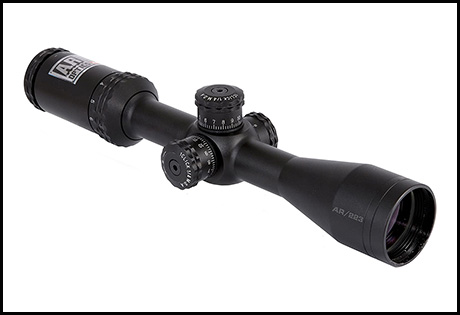
Leading the pack is this great riflescope from Bushnell. With its shockingly low price, it has many adherents. The scope itself has features attributing it to great accomplishment.
The optics are AR with a power of 3-9x which makes long-range shooting a play. The objective is a standard 40 mm which heightens the target’s clarity and rendering exact focusing.
A second focal plane is a standard on this scope and zero calibration is at 100 yards with aiming points reaching up to 500 yards – not too bad for a long-range scope. The scope arrives loaded with a multi-coated lens that does not give two hoots for ambient light conditions. Brightness is delivered for sure.
The quick focus eyepiece is a testimony to precise shooting. The eye relief provided does exactly; provides ample margin from the recoil keeping you safe. Durability and robustness figure highly for any scope. Made of hard-anodized aluminum alloy, a long-life is guaranteed.
For waterproofness, not only is it sealed but inert gas purged. So come rain, fog or whatever the elements bring down, your scope remains unscathed. Needless to say, it is scratch-and rust-proof.
We all know that Bushnell is no babe in the woods when it comes to riflescopes. We noticed the scope was heavy and the turret marks were a bit offline. But that was not a deal breaker anyway.
Specifications
- Magnification : 3-9x
- Objective : 40 mm
- Length : 12.2 inches
- Weight : 21 oz.
- Eye relief : 3.7 inch
- Adjustment : ¼ MOA
- Reticle : Bullet-Drop BDC
Pros
- Great precision despite long-range
- Superb durability
- Unmatched multi-coated optics
- Despite low magnification, high mid-range accuracy
- Eye relief ample
Cons
- BDC dots are small that could be improved
Our Verdict
Summing up, it is a wise pick for professionals and hunters whose interest is durability, top-notch quality and above all, reliability. Considering the price point, the Bushnell Drop Zone can be the perfect scope for a 223 bolt action rifle, or any other long range rifle, for that matter.
This is one scope you will be glad to have in your belt. Like a faithful dog, it will give you accuracy and you will be your own master of every situation.
4 Trijicon ACOG 3.5×35 Riflescopes
![]()
The big boy of riflescopes is here! The ACOG or otherwise called the Advanced Combat Optical Gunsight, has been in use by vets and their collective view is “it just does not fail.” Do we need to say more?
The ACOG is the jewel in this crown. It is an exorbitant show of optical engineering and aptly deserved too. With around 12 different variations and over a dozen reticular combinations, it derives its power to illuminate from three sources primarily; batteries, fiber optics, and Tritium.
Replenishing power and light during the day is the job of the fiber optics. When the light calls it a day, the tritium imparts a faint glow. The reticle itself is always a BDC which is pre-calibrated for a load of 5.56. It has a built-in rangefinder.
With the Trijicon ACOG, you can get that flea off the squirrel’s head at 500 yards with the squirrel oblivious. The Trijicon turns its collars up at the sheer brilliancy of its optics; absolutely outstanding. An extremely strong and magnificent glass gives you the freedom to see and be selective of the different targets that become visible.
The much-trumpeted ACOG has its own cons; being self-regulation of the system. The brighter it is outside, the reticle follows likewise that can be an impediment. But it performs incredibly in low light and in pitch darkness, and you have night vision to fall back on.
Some trade-offs; too much outside brightness and you need to tape off the red stripe which is the light collector. The reticle illumination is restricted to your location, not that of the target.
Specifications
- Magnification : 3.5x
- Objective : 35 mm
- Length : 8 inch
- Weight : 14 oz.
- Eye relief : 2.4 inch
- Adjustment Click value : ¼ MOA
- Field of view at 100 yards : 28.9 feet
- Reticle : Illuminated Red TA11EA Chevron
Pros
- Binding Aim Concept where both eyes are open
- Ideal for hunting where multiple targets are on the move
- The riflescope is waterproof to 100 yards.
- Compact and lightweight
- Long eye relief and large exit pupil for quick target acquisition
Cons
- Self-regulating reticle illumination can be hindering.
Our Verdict
The Trijicon ACOG is a combat-proven scope where it’s all about power weaponry. But getting down to brass tacks, this is undoubtedly where the ball drops. If you’re a veteran searching for the best scope for a 223 rifle today’s market has to offer, This one will be a great match for you.
You need deep pockets for this one, at least something in the vicinity of 1.2K. This scope is decidedly for veteran marksmen. Our reasoning is that we do not envisage you in tactical, combat, or sniper roles in ordinary circumstances.
5 Vortex Optics Diamondback Second Focal Plane Riflescope
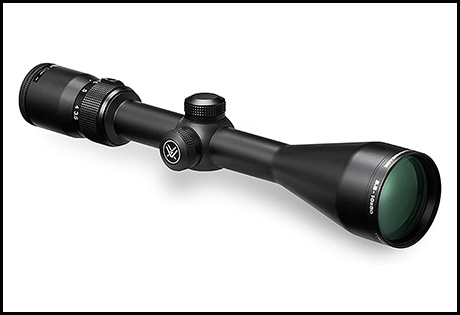
Vortex is a leader in the American Industry that deals with optical equipment be it for bird watching, law enforcement, recreational sport, you name it; the point being they are not the new kids on the block when it comes to riflescopes.
The Vortex Diamondback is so popular for all the right reasons. Its amazing combination of high quality with a low price has the consumers eating out of their hands.
The glass of this high-quality scope is multicoated. Being a second focal plane scope, it renders spectacular quick focusing features and compactness that further highlights sharp imagery.
As far as durability goes, it is a single-piece hard-anodized finish bestowing the Diamondback with great robustness, achieving three things at one go; sturdiness, shockproof and camouflage. Waterproofing and fog proofing is arrived at by O-sealing of the lens and nitrogen purging of the tube.
The reticle options are two; a dead-hold BDC and a V-Plex.
We found the Diamondback a pretty straightforward scope. It’s child’s play to figure it out and mount. Being lightweight, it is not awkward to position your stance. In a short while, it makes you comfortable.
Of the reticle options, we found the Dead-hold BDC a great deal simpler for windage and elevation corrections. In the same breath, not providing a sunshade seems irresponsible.
We do not need to delve into the sourcing part of the scope, but it should suffice to say that if you are new to hunting or short on cash, the Diamondback will make you proud.
Specifications
- Magnification : 4-12x
- Objective : 40 mm
- Length : 12 inches
- Weight : 14.6 oz.
- Eye relief : 3.1 inch
- Parallax setting : 100 yards
- Field of view at 100 yards : 32.4-11.3 feet
- Reticle : BDC
Pros
- Splendid multi-coated lens
- Smooth and handy zoom
- Accurate tracking by the glide erector system
- Excellent accuracy of the dead-hold BDC reticle
- Parallax easily removable as objective lens adjustable
Cons
- Zoom self-adjustment needs familiarization
- Eye relief for some can be short.
Our Verdict
With its numerous advantages, it can be easily understood why Diamondback is a better option than other products at twice the price range. If you prioritize crisp images over long distances and reliable performance, this scope won’t disappoint you.
The features are specific to medium-range shooting, the optic quality is above par and the entire package comes with serious design understanding of the riflescope.
6 Nikon Buckmasters II 3-9×40 BDC
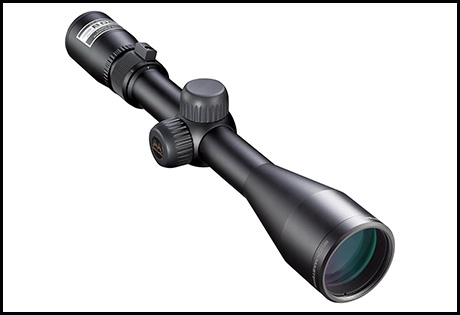
Nikon knows how to hit home runs on the trot. They did just that with the Buckmasters II leaving the competition frothing. Blending simplicity with solidity is not an easy task. Nikon makes it so.
The reticle is BDC, reinvented with transparent ballistic circles, raising the stakes for long-range hunters. A spot-on ballistic match technology has been introduced here to enable the reticle to shoulder shot accuracy considering load, ammo in use, and so on.
As a gun accessory, it has to face up to some undesirable abuse when you’ll be shooting your AR 15. A lot of infrastructure has gone into ensuring solidity.
This scope is totally waterproof, complete with perfect lens sealings and inert gas internal purging. The lens is fully multi-coated and the turrets resettable without any tools.
This scope has a light transmission of up to 92% owed to their patented BrightVue technology. Blurring images at close to mid-range and there is no way for parallax correction. The eye relief of 3.6 inches is an aspect to watch closely before making up your mind.
The Nikon warranty policy looked a bit shady to us- No-Fault Repair/Replacement Policy and Limited Lifetime Warranty. On confirming with them, shipping defects are OK but not if your scope gets stolen. Fair enough.
Specifications
- Magnification: 3-9x
- Objective: 40 mm
- Length: 12.3 inches
- Weight: 13.1 oz.
- Eye relief: 3.6 inches
- Parallax setting Factory set: 100 yards
- Field of view at 100 yards: 33.8-11.3 feet
- Reticle: BDC
Pros
- Very affordable
- Optics is fully multi-coated
- The BDC reticle is exemplary
- Needs no batteries
- Superb build and quality
Cons
- Eye relief questionable
Our Verdict
The Nikon Buckmasters II is in a class of its own. The riflescope is what is of interest to us specifically. Since we have sighted and done some common tests, this riflescope tells no lies.
The Buckmasters is truly an accomplished product, in particular, the reticle management which is at the heart of things.
7 Vortex Optics Crossfire II Dead-Hold BDC
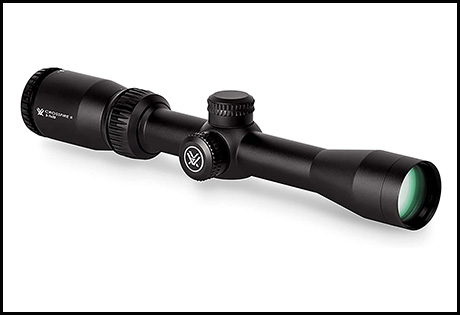
Versatile, great performance, overall great buy, and so on as reviews claim. So many models so let’s not get bogged in. Vortex is no child in arms when we speak of high-performance riflescopes. So let’s go.
The magnification is in the ideal slot; 6-24x. The second magical deal is the rigid construction.
Cast from a single piece of 1-inch aircraft-grade aluminum, anodized and finished in black, it can withstand severe conditions within accepted norms. It is made to take high recoil and impact.
Any penetration of foreign matter and moisture is kept at bay with the lens being O-sealed and the tube nitrogen purged.
This variable optic is wonderful irrespective of whether you are using an AR or a hard-hitting bolt-action firearm. The second focal plane houses a Dead-Hold BDC reticle with a customized hash marked design that takes the guesswork out of the elevation and wind factors.
In an SFP, the reticle is situated close to the ocular which means the plane changes size depending on the setting of the magnification and the BDC will be accurate at the highest setting. This makes it a winner for long-range shooting and competitions.
Mounting this scope calls for additional investment as rings are not provided by Vortex. We advise going for a cantilever mount that gives better shoulder support.
We found the design a bit short in that one cannot see the MOA markings on the turret when carrying out an adjustment as they are obstructed by the fingers.
Specifications
- Magnification: 3-9x
- Objective: 40 mm
- Length: 11.9 inches
- Weight: 15 oz.
- Eye relief: 3.8 inches
- Field of view at 100 yards: 34.1-12.6 feet
- Adjustment click value: ¼ MOA
- Reticle: Dead-Hold BDC
- Tube diameter: 1-inch
Pros
- Very durable construction
- Inexpensive
- Great clarity of vision
- Excellent adjustability
- Fast focus eyepiece
- Extravagant magnification power range
Cons
- Hashmark visibility poor
- No mounting arrangement provided.
Our Verdict
Vortex is a giant in the field of optics. Their premium range covers optics for wildlife and bird watching, law enforcement, and outdoor recreational sports. Choosing Vortex is joining an exclusive club.
We have here an expensive, top-notch product with ultimate magnification and clarity of vision. Whether you’re up for some close range varmint hunting or long-range sharp shooting, this vortex scope can be the best scope for 223 rifles in terms of convenience and performance.
8 Vortex Optics Crossfire II Riflescopes V-Brite Illuminated
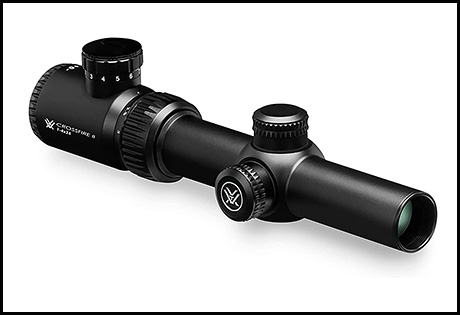
The V-Brite claims a class of its own. It comes with the works. Adequately long eye-relief, an eyepiece that is a fast focus type, lenses fully multicoated, and turrets that are resettable.
There is no compromise on this Crossfire II. Bright, tough, and clear is how we can put it best. For the price, it does score heavily on its challengers.
It is made of a single piece of anodized aircraft-grade aluminum, both O-sealed and nitrogen purged for waterproofing and standing in the way of fog prevention. The reticle is V-Brite that uses the V-plex advancement format.
With the battery-operated center dot illumination, it takes your performance to a new level. This scope is a godsend to hunters and shooters in extreme low light conditions.
But we did find it a jot on the heavier side. The crosshair seems a bit awry but not exactly troublesome. The general opinion is that it is a great multipurpose scope. We tried it on a Thompson Center Venture Predator Max and it did well at 1000 yards.
A 30mm tube affords enormous strength as compared to a one-inch tube. The Crossfire II Dead-hold BDC saves weight without sacrificing durability. The V-Brite is positioned for greater recoil and power.
Specifications
- Magnification: 1-4x
- Objective: 24 mm
- Length: 9.8 inches
- Weight: 14.8 oz.
- Eye relief: 4 inches
- Field of view at 100 yards: 96.1-4.1 feet
- Adjustment click value: ½ MOA
- Reticle: V-Brite Illuminated center dot BDC
- Tube diameter: 30 mm
Pros
- Affordable
- Illuminated reticle and BDC options
- Turrets that are zero resettable
- Lifetime transferable warranty
Cons
- Images could be better on low magnification
- Turret tracking could be better
Our Verdict
Our hope is that our highlighting of this scope has been illuminating. To reiterate, the robustness and durability of this scope are wonderful not to mention the complete waterproofness of the scope and its ability to take some beating.
This might not be the best varmint scope for 223 rifles, but it provides great value for the money in darker environments. The Vortex Crossfire II is definitely worth trying if you hunt primarily at dawn/dusk.
9 Bushnell 1-4x/24mm scope
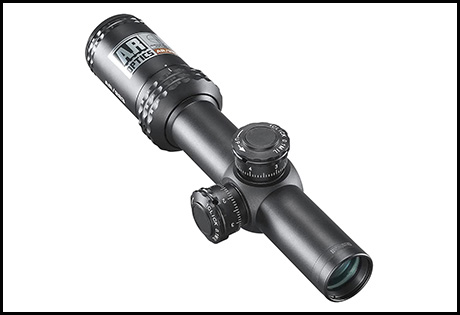
The market, if you observe, is mostly inundated by variable scopes claiming better viewing. However, the Bushnell, which is basically an AR optic, comes with a bunch of goodies that are hard to not pay heed to.
Though on the bulkier side, when it comes to the crux, it’s hardly anything when compared to other 4x magnification scopes out there.
The Bushnell 1-4x/24 has a suffix; PCL which is short for Power Controlled Lever. It is a foldable handle that can be deployed swiftly to go from 1x to 4x. This optic will hardly see the user using 2 or 3x.
The reticle is of the BTR-I type – a reticle calibrated for the .223. This reticle is magical in all daylight conditions without the requirement of any illumination.
If you do go in for a Bushnell, do opt for the PCL version. It can be dismantled if you feel you don’t need it. The turrets are exposed and finger adjustable. No locking arrangements have been provided and no zero stop, so this is a weak area of this scope.
At night, the 1x disappears. But this scope comes with the best illumination system we have seen so far in any scope. The illumination marking is in 11 steps, 1 being off. The steps have been adjusted brilliantly. Position 11 is for bright daylight against a white background. We simply cannot but agree that this is how reticle illumination should work.
The quality of the clicks belies its budget nature. As a short-range carbine scope, the clicks are very distinct, audible but exhibit a truckload of lash on each click; meaning crispness is out of the picture.
Specifications
-
- Magnification: 1-4x
- Objective: 24 mm
- Length: 9.4 inches
- Weight: 18 oz.
- Eye relief: 4 inches
- Field of view at 100 yards: 112-27 feet
- Adjustment click value: ½ MOA
- Reticle: Non-BTR 1
- Tube diameter : 30 mm
Pros
- Fully multi-coated lens
- Improved sighting
- Solid build
- Worth the price
- High-quality product
Cons
- Low shock quality
Our Verdict
Bushnell has been in the field of optics for years. Their products are the culmination of much research and engineering. These scopes are essentially short-and medium-range products that give you the best bang for your buck.
One suggestion though, protect those turrets when not in use. This scope is a good buy no matter how you look into it. This is a great scope for .223 varmint rifles, among others.
10 Leupold VX-Freedom 3-9x40mm Riflescope
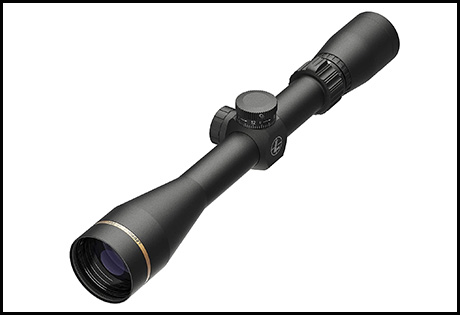
The Leopold brand for scope lovers is a hallowed brand. Their range covers a lot of bases – a proof enough of their expertise.
Freedom is one of their hotcakes. The 3-9x40mm comes in two styles; CDS (Custom Dial Service) and the Rimfire. The CDS provides custom adjustable turrets to suit your ballistic requirements.
Let’s just restrict ourselves to Leupold Freedom. This is a kind of master of all trades. From muzzleloaders to AR-15, the Leupold has no problem. Their goal is to fulfill all possible scenarios for hunters and shooters.
The Freedom has a standard duplex reticle. Being a budget-oriented product, they supply the core only, accessories are your baby which you need to procure separately.
Leupold has put everything into the optics, which is a total marvel. Some of the innovations will make your jaw drop. The turrets, for example, are not meant to make significant changes to drop, they do not have a zero-reset and are meant to be used with the turret caps in place.
We agree this scope was a bit deep to fathom out. Our team did a lot of thumbing and twirling of knobs to get a feel of the scope. The Freedom made things easier; zero adjusted automatically and we pumped off a couple of rounds.
The reticle worked fine but was not so user friendly. The zoom part was A1. Eye relief was just about OK but the eye box at 9x was not a happy number. The glass quality was superb though.
Specifications
- Magnification: 3-9x
- Objective: 40 mm
- Length: 12.39 inches
- Weight: 12.2 oz.
- Eye relief: 4.17 inches
- Material: 6061-T6 Aluminum
- Adjustment click value: ¼ MOA
- Reticle: Non-BTR 1
- Tube diameter: 1 inch
- Field of Vision@100 yards: 11.22-5.44 feet
Pros
- Highly affordable
- Compatible for use with a large number of rifles
- Excellent clarity for identifying targets
- Quantum Optical system integrated with eye box
- Fast focus eyepiece
- High-quality construction
Cons
- Lang-range magnification lacking
Our Verdict
The Leupold Freedom is an advanced version in which we found the United States Army Marksmanship Unit aptly put it; Shooting is shooting.
Whether you are in combat, at the range or in the field, chuck everything aside and get down to the job – get your target down. The fundamentals don’t change. Freedom epitomizes this culture. It’s worth the buy.
Quick Guide to Buying the Best .223 Scopes
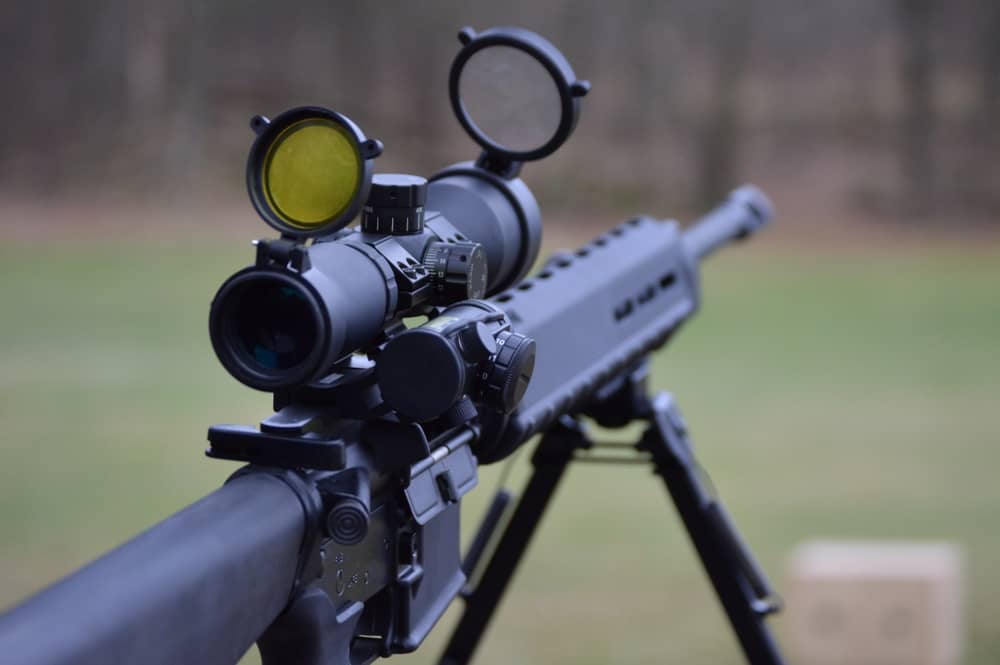
1. Build Quality
All scope manufacturers are aware of the importance of providing an all-weather sturdy scope to their clients. The tube of the scope needs to be lightweight with the strength of a bison and having the flexibility too of being inured to stress. The choice of material is the classic combination of aircraft-grade aluminum.
There are plenty of these combinations and each maker is his own. The end result, however, is a sturdy scope capable of withstanding the knocks which is a common occurrence.
The lens itself is the nerve center and the O-seals that insulate the lenses from any kind of ingress are vital and inert gas purging of the tube cover the requirements amply
2. Reticle
BDC reticle – The name says it all; Bullet Drop Compensator. The markings under the middle of the crosshairs indicate the projected bullet drop which is to be compensated for.
Mildot reticle – A mil dot reticle is for range finding. MIL is short for milliradian.
Illuminated reticle – This brightens the reticle utilizing light so that in low light conditions the target gets to be more visible.
Dot reticle – The scope exhibits a red dot which is the point of aim.
3. Magnification
It really doesn’t matter whether you require a scope to shoot that coyote or deer at 50 yards. You need magnification for shots aimed at longer distances.
Here accuracy and precision is part of the picture. When the magnification is significant, you can bring down targets located further off with greater ease. To find the scope with the right magnification, check the numbers on the scope.
4. Lens & Light Transmission
Light transmission to the lens skyrockets when the lens is sealed tight from sources that can affect the clarity. The lens as we have repeatedly endorsed is the heart of a scope.
If there is a compromise here, consider your scope useless. The lens harvests available light. The bigger the objective, the better the amount of light gathered.
5. Tube Size
The tube provides rigidity and is directly responsible for the durability and robustness of the scope. Secondly, it determines your field of view. Tubes come in 3 different standards; 1 inch, 30mm, and 34mm. A 34 mm obviously gives a far better field of vision.
Another aspect to consider is that the weight also rises with a greater bore tube. Some people erroneously believe that the larger the tube, the more the light. In general, tube size does not weigh heavily on your choice of scope.
6. Eye Relief
This is an important parameter that one needs to pay careful attention to. The eye relief is that space between the eye and the scope whereby the eye can see the entire view and utilize it. The further the eye is positioned away from the scope with an uninterrupted view, the better.
A scope can still be mounted a bit further on the barrel, but there is a trade off between sight and safety. Eye relief is paramount for safety keeping your eye safe from recoil.
7. MOA & MIL (MRAD)
These measurements are useful for adjusting your scope’s turrets. One MOA is 1 inch at 100 yards and 1 MIL is 3.6 inches per 100 yards. S if your shot is one inch off, you can adjust to bring the inch back to the opposite direction.
8. Accuracy & Clarity
This is the one factor on which your entire choice of a scope is pegged. Without an accurate scope, you will bag nothing and be wasting precious ammo.
When hunting for an apt scope for the .223, what you need is an optic that has optimum accuracy so that the guesswork about elevation and drop is taken out of the equation and performance is enhanced.
9. First or Second Focal Plane
Preference over first or second focal plane scopes is a personal choice. A reticle contained in the first focal plane scope changes sizes as you zoom in whereas the reverse is true of a second focal plane; it will remain the same size irrespective of zoom.
10. Weight
The weight of the scope depends on a number of factors; tube dia., objective size, accessories, and so on. Ideally, for a shooter who would be on his feet when taking a shot, the weight makes a difference as it introduces wobble which directly affects accurate aim. A shot executed lying supine, weight is not an issue
11. Mounting Option
Mounting a scope is a delicate and careful affair. This requires patience and time. So, carefully understand the mounting option before you decide on the best scope for a 223 rifle.
Normally, there are two methods of mounting a scope – Picatinny rails and rings, the more popular being rings. We personally prefer rings as any alterations to get the scope on even keel can be done using shims.
Scope Cleaning & Maintenance Tips
Your .223 scope scarcely needs maintenance, though your AR 15 will. The following cleaning tips are recommended by the RangerExpert team.
- Exterior surfaces of metal should be kept clean. A dampened cloth used for light dusting should do the trick.
- Turret caps are all treated to exclude water incursion. Leave them on.
- Start with a soft-bristled paintbrush or a lens brush to gently whisk dust and dirt away.
- Using an eye syringe or a bulb aspirator, blow off any further remnants of debris.
- If further cleaning is called for using a soft lint-free cloth. Clean the objective starting at the center and rotating outwards to the edge.
- If not satisfactory, repeat.
- Do not use any solvents unless it is a patented lens cleaner. Otherwise, you risk damaging the lens and then looking for repair options.
- Use a microfiber cloth for cleaning.
FAQs
Q. 1: How to sight in .223 rifle scope?
Ans: Follow these steps to sight in the scope:
- Mount your scope
- Focus the reticle. The crosshairs should be crisp and upright. To do this, focus on the sky and then a terrestrial object. The vision should not be blurry.
- Next step is to boresight the firearm
- After bore sighting, you are good to start. Try 25 yards first using a paper target.
- You adjust your MOA settings for the bullseye
- Increase yardage once you’ve got it right.
Q. 2: How to mount a scope on a DPMS 223?
Ans: Mounting a scope is a tricky affair. There are two basic mounting styles available – Picatinny rails or ring mounts. The latter seems much more favored.
Q, 3: What to Zero a .223 Scope at?
Ans: Okay, your new scope has arrived and is sitting there ready to swing into action. The first step is to zero it. Make sure your gun is not loaded and mount the scope following the instructions.
No need to hurry, just get it right. The correct mounting is of great importance. Even the slightest can’t will horribly spoil things in the process. You will need a bubble level and shims to get a perfect system.
Head for the range next. Boresighting comes next which is outside the scope of this article at this point. Let it suffice to say that your scope’s alignment is a process that initially if not perfect, will give you great headaches.
Q. 4: The AR-15 seems to be the choice, why is that so?
Ans: An AR-15 is an accepted standard. The most important part of a firearm is the bolt. A gun with a barrel of low quality, a non-mil spec buffer tube, poor finish all adds to a deficient gun which is a danger. The AR-15 is a clearly superior firearm which has been perfectly designed to obviate these setbacks.
Q. 5: Can I hunt deer with a .223?
Ans: The .223/5.56mm NATO cartridge is actually too light for large game animals like hogs, bears and deer because it lacks in terms of terminal energy. However, you can still shoot deer as long as you keep the range under 150 yards.
Q. 6: How far can a .223 bullet travel?
Ans: A good .223 round could travel 4.5 miles at most while the average bullet could cover 3 miles. But the effective range is between 400 and 600 meters.

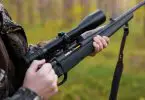

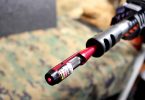

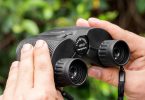
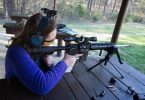

Leave a Comment